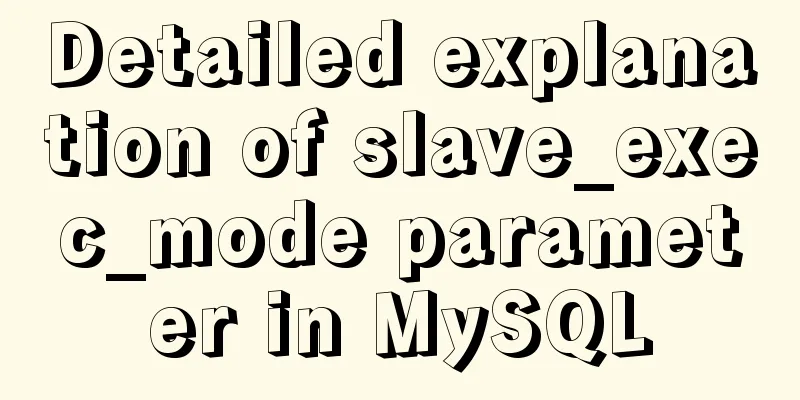Solution to ES memory overflow when starting docker

|
Add the jvm.options file to the elasticsearch config, modify the stack size, the default is 2GB, and start es directly to ensure that the configuration file has been mapped before. -Xms5g -Xmx5g The complete jvm.options file is as follows:
## JVM configuration
################################################################
## IMPORTANT: JVM heap size
################################################################
##
## You should always set the min and max JVM heap
## size to the same value. For example, to set
## the heap to 4 GB, set:
##
## -Xms4g
## -Xmx4g
##
## See https://www.elastic.co/guide/en/elasticsearch/reference/current/heap-size.html
## for more information
##
################################################################
# Xms represents the initial size of total heap space
# Xmx represents the maximum size of total heap space
-Xms5g
-Xmx5g
################################################################
## Expert settings
################################################################
##
## All settings below this section are considered
## expert settings. Don't tamper with them unless
## You understand what you are doing
##
################################################################
## GC configuration
-XX:+UseConcMarkSweepGC
-XX:CMSInitiatingOccupancyFraction=75
-XX:+UseCMSInitiatingOccupancyOnly
## optimizations
# pre-touch memory pages used by the JVM during initialization
-XX:+AlwaysPreTouch
## basic
# force the server VM (remove on 32-bit client JVMs)
-server
# explicitly set the stack size (reduce to 320k on 32-bit client JVMs)
-Xss1m
# set to headless, just in case
-Djava.awt.headless=true
# ensure UTF-8 encoding by default (eg filenames)
-Dfile.encoding=UTF-8
# use our provided JNA always versus the system one
-Djna.nosys=true
# use old-style file permissions on JDK9
-Djdk.io.permissionsUseCanonicalPath=true
# flags to configure Netty
-Dio.netty.noUnsafe=true
-Dio.netty.noKeySetOptimization=true
-Dio.netty.recycler.maxCapacityPerThread=0
# log4j 2
-Dlog4j.shutdownHookEnabled=false
-Dlog4j2.disable.jmx=true
-Dlog4j.skipJansi=true
## heap dumps
# generate a heap dump when an allocation from the Java heap fails
# heap dumps are created in the working directory of the JVM
-XX:+HeapDumpOnOutOfMemoryError
# specify an alternative path for heap dumps
# ensure the directory exists and has sufficient space
#-XX:HeapDumpPath=${heap.dump.path}
## GC logging
#-XX:+PrintGCDetails
#-XX:+PrintGCTimeStamps
#-XX:+PrintGCDateStamps
#-XX:+PrintClassHistogram
#-XX:+PrintTenuringDistribution
#-XX:+PrintGCApplicationStoppedTime
# log GC status to a file with time stamps
# ensure the directory exists
#-Xloggc:${loggc}
# By default, the GC log file will not rotate.
# By uncommenting the lines below, the GC log file
# will be rotated every 128MB at most 32 times.
#-XX:+UseGCLogFileRotation
#-XX:NumberOfGCLogFiles=32
#-XX:GCLogFileSize=128M
# Elasticsearch 5.0.0 will throw an exception on unquoted field names in JSON.
# If documents were already indexed with unquoted fields in a previous version
# of Elasticsearch, some operations may throw errors.
#
# WARNING: This option will be removed in Elasticsearch 6.0.0 and is provided
# only for migration purposes.
#-Delasticsearch.json.allow_unquoted_field_names=true
Supplement: Docker container memory limit Docker memory limitdocker run -d -i -t -m 256M --memory-swap 512M --name centos2.12 centos /bin/bash View the container instance memory limit:
Limit container memory size;
-m, --memory # Memory limit size, the unit can be b, k, M, g; the minimum is 4M --memory-swap #Total limit of memory + swap partition size --memory-reservation #Reserved memory size; minimum memory occupied by the container on the host; --oom-kill-disable # out-of-memory memory overflow; limit the killing of container processes, not set by default --oom-score-adj # The priority of the container being killed by the OOM killer, the range is [-1000, 1000], the default is 0 --memory-swappiness # Used to set the virtual memory control behavior of the container. The value is an integer between 0 and 100 --kernel-memory Core memory limit, minimum is 4M. 1. memory sets the container memory size;--memory-swap is not the swap partition, but the size of memory + swap; The container's swap partition swap = memory-swap - memory 2. The size of the Docker default container swap partition is the same as the memorymemory-swap is not set or is set to 0; The swap size of the container is the size of the memory. Maximum memory used by the container's process = memory + swap 3. Memory-swap settingsWhen memory-swap is set to -1; The container memory size is the size set by memory; The swap partition size is the host machine swap size; The maximum memory that the container process can use = memory + host swap size; 4. Memory overflow--oom-kill-disable Limit the kill container process; (Must be set after memory to be limited;) docker run -d -i -t -m 256M --oom-kill-disable --name Centos-1 centos /bin/bash 5. Kernel Memory & User MemoryThe difference between kernel memory and user memory is that kernel memory cannot be swapped out. The inability to swap out allows containers to block some system services by consuming too much memory. Core memory includes: stack pages slab pages socket memory pressure TCP memory pressure This memory can be constrained by setting kernel memory limits. Each process consumes some stack pages, and by limiting kernel memory, you can prevent new processes from being created when kernel memory usage becomes too high. docker run -d -i -t -m 500M --kernel-memory 128M --name Centos-2 centos /bin/bash Limit container memory to 256M; limit core memory to 128M. docker run -d -i -t --kernel-memory 128M --name Centos-3 centos /bin/bash The memory is the host memory size, and the core memory is limited to 128M 6. Swappiness memory recycling pageThe container's kernel can swap out a certain percentage of anonymous pages. --memory-swappiness is used to set this ratio. --memory-swappiness can be set from 0 to 100. # 0 means turning off anonymous page swapping. # 100 means all anonymous pages can be exchanged. By default, if --memory-swappiness is not applied, the value is inherited from the parent process. docker run -d -i -t --memory-swappiness=0 --name Centos-4 centos /bin/bash Setting --memory-swappiness to 0 preserves the container's working set and avoids the performance penalty of the swap agent. The larger the Swappiness value, the more actively the swap partition is used, and the smaller the value, the more actively the physical memory is used. Default swappiness=60 sysctl vm.swappiness = 100 # cat /proc/sys/vm/swappiness The above is my personal experience. I hope it can give you a reference. I also hope that you will support 123WORDPRESS.COM. If there are any mistakes or incomplete considerations, please feel free to correct me. You may also be interested in:
|
<<: MySQL 5.7.33 installation process detailed illustration
>>: CSS3 realizes the childhood paper airplane
Recommend
Several situations where div is covered by iframe and their solutions
Similar structures: Copy code The code is as foll...
The textarea tag cannot be resized and cannot be dragged with the mouse
The textarea tag size is immutable Copy code The c...
About the use of Vue v-on directive
Table of contents 1. Listening for events 2. Pass...
Detailed understanding and comparative analysis of servers Apache, Tomcat and Nginx
1 Question The company's server uses Apache, ...
MySQL Community Server 5.7.19 Installation Guide (Detailed)
MySQL official website zip file download link htt...
Four ways to combine CSS and HTML
(1) Each HTML tag has an attribute style, which c...
Let's talk about the two functions of try catch in Javascript
The program is executed sequentially from top to ...
How to use a field in one table to update a field in another table in MySQL
1. Modify 1 column update student s, city c set s...
Detailed explanation of js closure and garbage collection mechanism examples
Table of contents Preface text 1. Closure 1.1 Wha...
Summary of Problems in Installing MySQL 5.7.19 under Linux
The first time I installed MySQL on my virtual ma...
Detailed explanation of how to configure multi-threaded master-slave replication from MySQL 5.7 slave nodes
Preface MySQL supports multi-threaded replication...
idea uses docker plug-in to achieve one-click automated deployment
Table of contents environment: 1. Docker enables ...
Detailed instructions for installing Jenkins on Ubuntu 16.04
1. Prerequisites JDK has been installed echo $PAT...
How to use watch listeners in Vue2 and Vue3
watch : listen for data changes (change events of...
Solution to mysql ERROR 1045 (28000) problem
I encountered mysql ERROR 1045 and spent a long t...










